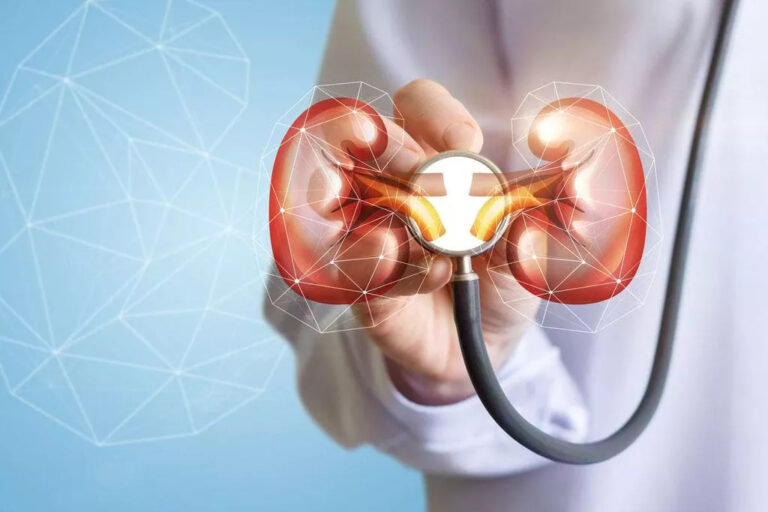Delirium Tremens DT: Definition, Symptoms, Treatment
Contents
To avoid delirium tremens patients should seek help as soon as they decide they want to stop drinking. Getting into a reputable medical detox facility can help ensure a team of professionals help prevent DT or help you cope with any symptoms of withdrawal. For example, other cross-tolerant medications, such as barbiturates, would be expected to relieve withdrawal symptoms and prevent withdrawal seizures and DT’s.
Its symptoms generally appear within hours of stopping or even just lowering alcohol intake and, thus, BAC. The most common symptoms include tremor, craving for alcohol, insomnia, vivid dreams, anxiety, hypervigilance,2 agitation, irritability, loss of appetite (i.e., anorexia), nausea, vomiting, headache, and sweating. Even without treatment, most of these manifestations will usually resolve several hours to several days after their appearance. For anyone with a chronic and long-term problem with alcohol abuse, medical detox is vital.

A home or primary care physician’s office does not have the tools or equipment needed to administer to someone experiencing DT. The delirium tremens experience can vary from one person to another, depending, in part, on the level of previous alcohol use. DTs are more common among people with a history of heavy, long-term alcohol consumption, and somewhere between 3% and 5% of people quitting alcohol will have delirium tremens symptoms. Treatment in a quiet intensive care unit with sufficient light is often recommended. Benzodiazepines are the medication of choice with diazepam, lorazepam, chlordiazepoxide, and oxazepam all commonly used. Delirium tremens was first recognized as a disorder attributed to excessive alcohol abuse in 1813.
Delirium Tremens – DTs : Beer, Alcohol and Treatment
The first part of treatment for alcohol addiction is an alcohol detox program to safely overcome any symptoms experienced during the withdrawal phase. More significant delirium tremens symptoms were observed in the heavier drinkers. Interestingly one of the participants didn’t abstain, and instead, does beer really make you fat he reduced his intake by 50%. Delirium tremens rarely occurs among pediatric patients, because the physiologic substrate for severe alcohol withdrawal takes time to develop. Alcohol withdrawal happens when a person drinks alcohol for a long period of time and then quits or stops drinking.
- Regular alcohol intake affects numerous excitatory and inhibitory neurotransmitter systems in the brain .
- Mortality was as high as 35% prior to the era of intensive care and advanced pharmacotherapy.
- If yourblood pressure, pulse, or body temperature rises, or if you have more serious symptoms likeseizuresand hallucinations, seek medical care immediately .
- Delirium tremens is mainly caused by a long period of drinking being stopped abruptly.
Summit Malibu was created by people in recovery for people seeking to recover. Many physicians will also require a blood sample to measure magnesium and potassium levels, as well as tests for liver and heart function. We believe trust, meaningful connections, and kindness are the essentials to beginning a journey in recovery.
Long-Term Treatment
English author George Eliot provides a case involving delirium tremens in her novel Middlemarch (1871–72). Housekeeper Mrs. Abel provides Raffles’ final night of care per Bulstrode’s instruction whose directions given to Abel stand adverse to Dr. Tertius Lydgate’s orders. Alcoholic beverages can also be prescribed as a treatment for delirium tremens, but this practice is not universally supported. Isbell H, Fraser HF, Wikler A, Belleville RE, Eisenman AJ. An experimental study of the etiology of “rum fits” and delirium tremens. These symptoms will usually peak within 5 days of beginning, and symptoms start to subside after 5 to 7 days.
The central nervous system , made up of the brain and spinal cord, regulates functions of the pleasure and reward center, breathing, heart rate, body temperature, and more. Alcohol depresses the , slowing down vital functions of the body, affecting mood, speech, motor functions, perceptions, and reaction time. Excessive alcohol use accounts for 88,000 deaths in the United States each year, including 1 in 10 deaths among adults aged 20-64, according to the Centers for Disease Control and Prevention . Alcohol related liver disease and motor-vehicle crashes are the most common causes of death. Some healthcare providers administer an assessment known as the Clinical Institute Withdrawal Assessment of Alcohol Scale (CIWA-Ar) when diagnosing DTs. The Belgian beer “Delirium Tremens,” introduced in 1988, is a direct reference and also uses a pink elephant as its logo to highlight one of the symptoms of delirium tremens.
But if you’re feeling a number of the symptoms, you’re at risk and should seek medical help immediately. At its most serious, delirium tremens can lead to high temperatures, seizures, stroke and death. Experiencing seizures from DTs is most common 12 to 48 hours following the last drink. During the acute phase of delirium tremens or alcohol withdrawal delirium, it’s necessary to first stabilize the individual. This is because many people struggling with an alcohol use disorder have extremely unhealthy diets and in fact, are often malnourished. Regardless of when the withdrawal symptoms start, they can be extremely dangerous to a person’s health.
The key is to help patients navigate through the DTs so they can emerge sober, healthy, and ready to continue onto intensive inpatient rehab. Treatment often includes medications to treat the symptoms of the DTs and emergency medical support for any severe symptoms. It is important to recognize that the DTs can not be treated at home, professional medical alcoholism treatment & alcohol rehab support is always needed to prevent deadly side effects of this rare but potentially fatal symptom of alcohol withdrawal. AW syndrome varies significantly among alcoholics in both its clinical manifestations and its severity. These manifestations1 can range from mild insomnia to severe consequences, such as delirium tremens (DT’s) and even death.
GABA receptors are a family of chloride ion channels that mediate inhibitory neurotransmission. Chronic ethanol abuse seems to modify the GABA receptor via several mechanisms, leading to a decrease in GABA activity. Chronic ethanol exposure has been found to alter gene expression and to increase cellular internalization of certain subunits, affecting the type of GABA receptors that are available at the cell surface and the synapse. Chronic ethanol exposure has also been found to alter phosphorylation of GABA receptors, which may alter receptor function.
Insurance Information
Because of their similar effects, benzodiazepines and alcohol are cross-tolerant—in other words, a person who is tolerant to alcohol also is tolerant to benzodiazepines. Cross-tolerance also implies that when a person experiences a deficiency of one agent (e.g., alcohol during withdrawal), the other agent (e.g., a benzodiazepine) can serve as a substitute, thereby easing the withdrawal 15 benefits of staying sober symptoms. AW seizures also can occur within 1 or 2 days of decreased alcohol intake, even in the absence of other withdrawal signs and symptoms. The patient usually experiences only one generalized convulsion, which involves shaking of the arms and legs and loss of consciousness. If a second convulsion occurs, it generally happens within 6 hours of the first seizure .

Though the etiology remains unclear, there is a correlation between the duration of alcohol exposure and withdrawal symptoms. The only surefire way of preventing delirium tremens is to abstain from drinking alcohol, or to drink in line with sensible dietary guidelines . If you have a history of drinking 7 to 8 US pints of beer, or 1 US pint of liquor daily, you are at heightened risk of developing DTs during withdrawal. Today, we’ll double down on what you can expect if you encounter DTS while withdrawing from alcohol and how treatment at aHuntington beach rehabandsober living homecan help you conquer this problem.
What Are Symptoms of DTs and What Does It Feel Like?
Another nickname is “the Brooklyn Boys”, found in Eugene O’Neill’s one-act play Hughie set in Times Square in the 1920s. Delirium tremens was also given an alternate medical definition since at least the 1840s, being known as mania a potu, which translates to ‘mania from drink’. Acamprosate is occasionally used in addition to other treatments, and is then carried on into long-term use to reduce the risk of relapse.
Substantial variability also exists in the incidence with which symptoms occur in various drinkers. Some people who regularly consume alcohol never experience any withdrawal symptoms. For example, researchers still must clarify the exact molecular and genetic mechanisms responsible for the varied manifestations of withdrawal. Other studies should address the clinical significance of kindling and the risk factors for more severe withdrawal (Fiellin et al. 1998). Additional research also is needed to determine the most appropriate treatment settings as well as methods of engaging patients in ongoing relapse prevention efforts. Improved insight into these issues will enable clinicians to improve the efficiency and quality of care for patients who are experiencing or are at risk for withdrawal.
A total score of 15 or more points indicates that the patient is at increased risk for severe withdrawal effects, such as confusion and seizures. This article briefly reviews the mechanisms, clinical features, and management of AW. The article also discusses how the treatment of AW can be linked to the treatment of alcohol dependence and any co-occurring or underlying disorders. For more in-depth discussions of some of these issues, the reader is referred to subsequent articles in this issue. Delirium tremens occurs in chronic alcohol abusers who abruptly discontinue alcohol use, often as early as 48 hours.
For anyone suffering from a co-occurring mental health disorder like depression or anxiety, our dual diagnosis treatment programallows you to unpack both conditions simultaneously for the strongest chance of sustained recovery. If you drink only once in a while, it’s unlikely that you’ll have withdrawal symptoms when you stop. But if you’ve gone through alcohol withdrawal once, you’re more likely to go through it again the next time you call it quits. At our center for alcohol detox treatment, we unfortunately see many patients who are struggling with the DTs as a part of their alcohol withdrawals. Although it’s a relatively rare symptom of alcohol withdrawal, delirium tremens can be life-threatening — and it requires medical attention if you’re experiencing it.
Seizures can occur, and these can occur without any other symptoms of DTs developing. When the alcohol level suddenly drops, your brain stays in this keyed up state. Depending on the severity of the DTs symptoms, sedation can last for a week and sometimes even longer. You shouldn’t attempt to just “get through it” by waiting out the symptoms and hoping for the best.
